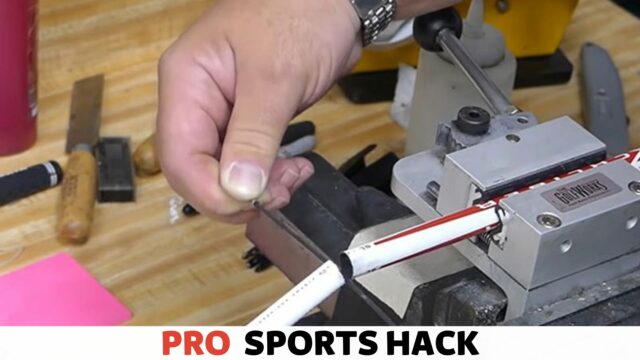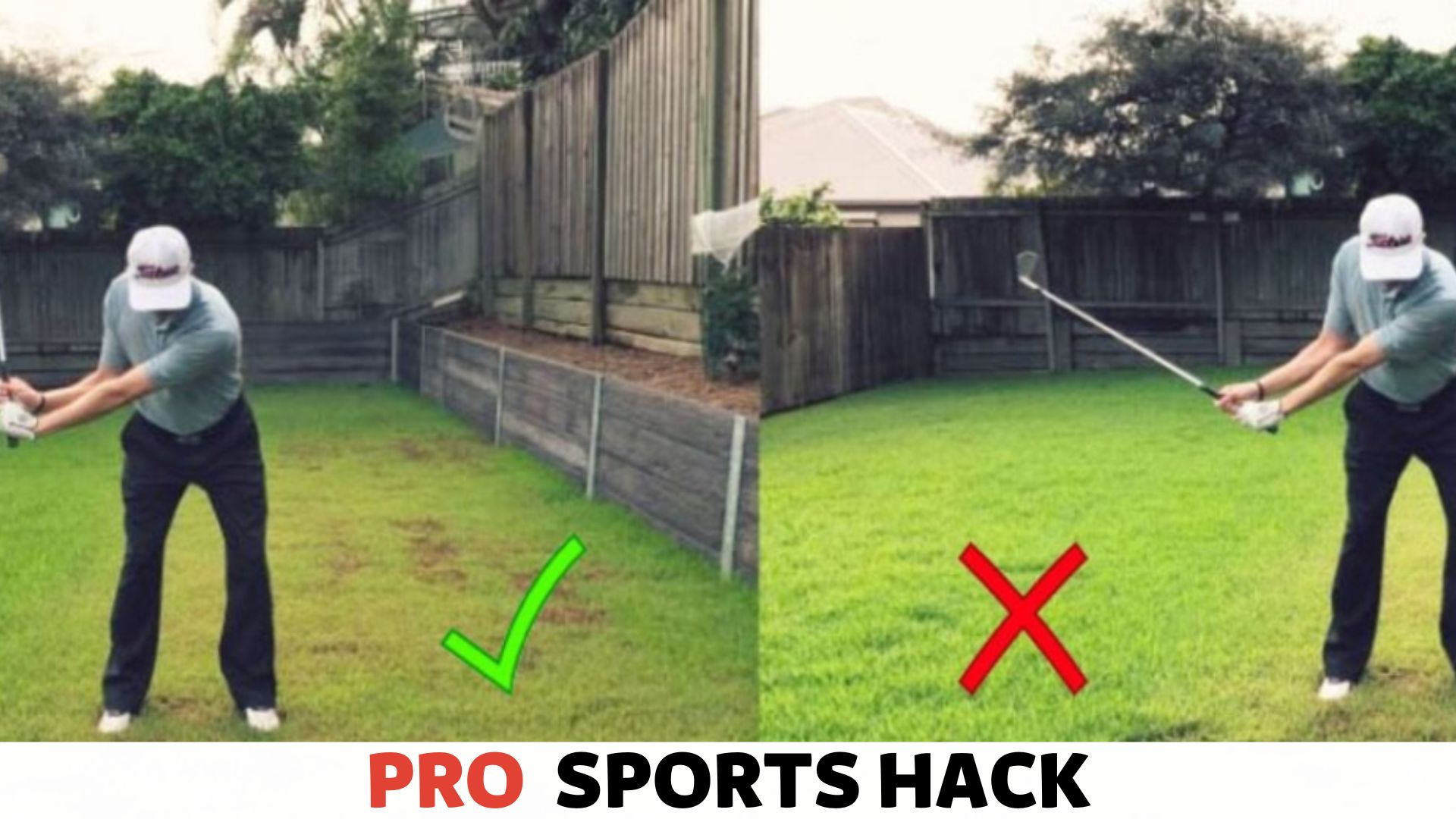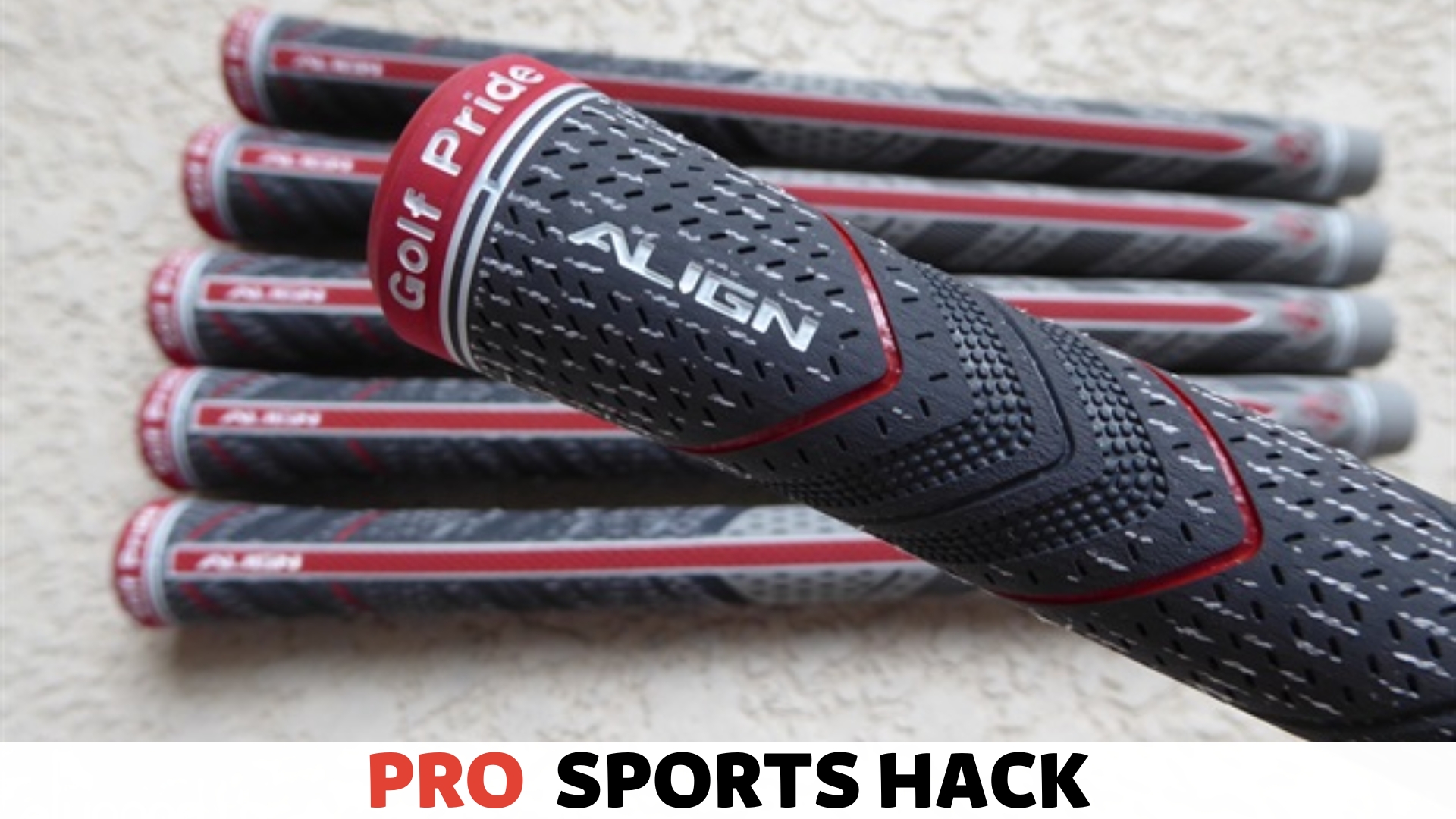
To cut a graphite golf shaft, use a carbon fiber cutting wheel and measure for accuracy. The cutting wheel should be rotated slowly and evenly to ensure a clean cut.
When completed, the shaft must be sanded to eliminate any rough edges. Cutting graphite golf shafts is common for professionals who require specific shaft lengths for their clubs.
Graphite, a lightweight material, can be cut precisely when the proper tools and procedures are utilized.
However, because graphite is fragile, it is important to pay attention to each process step to prevent damage or breakage.
This article will provide a step-by-step guide to safely and accurately cutting graphite golf shafts.
Understanding Graphite Golf Shafts
Graphite golf shafts play a critical role in determining the performance of a golf club. While the right shaft can help players achieve accuracy and distance, the wrong one can result in poor performance. Improving your game on the disc golf course is a priority for many enthusiasts. If you’re also looking to enhance your skills, check out our guide on how to get better at disc golf.
In this section, we’ll discuss the various compositions, characteristics, and types of graphite golf shafts to help you decide when purchasing one.
Composition
Graphite golf shafts are composed of carbon fibers and resins, making them lighter than their steel counterparts. These fibers are layered to create different flex profiles, and the resin acts as a binding agent. Composite materials, such as titanium and tungsten, may also be added for additional strength and durability.
Characteristics
Graphite golf shafts offer various attributes that make them appealing to different golfers.
- Lighter weight: Graphite shafts are lighter, making them ideal for golfers seeking more clubhead speed and distance.
- Flexibility: Graphite shafts come in different flex profiles, allowing golfers to choose a shaft that matches their swing speed and tempo.
- Vibration dampening: Graphite shafts reduce the shock waves generated at impact, resulting in a smoother and more comfortable feel.
- Torque: Graphite shafts have higher torque than steel shafts, providing a more significant degree of control and allowing for more spin on the ball.
Types
There are two types of graphite golf shafts: straight and tapered.
- Straight shafts: Straight shafts, as their name suggests, have a uniform width throughout their length. These shafts offer consistent performance and are ideal for golfers with a smooth tempo and swing.
- Tapered shafts: Tapered shafts are wider at the clubhead end and narrower at the grip end. These shafts are more flexible at the clubhead end and are ideal for golfers who generate a lot of clubhead speed.
Understanding the composition, characteristics, and types of graphite golf shafts is crucial in selecting the right one for your game. Take the time to consider your swing speed, tempo, and feel preferences to choose a shaft that maximizes your potential on the course.
Tools and Materials Required for Cutting Graphite Golf Shafts
When customizing your golf clubs, cutting graphite shafts is an important process. Proper tools and materials are vital to ensure a precise cut without damaging the shaft. Here are the essential tools and materials required for cutting graphite golf shafts:
Tools Required
- Hand saw: A handsaw with a fine-toothed blade is ideal for cutting golf shafts. It is important to use a saw with a handle that provides a secure grip and will not slip during the cutting process.
- Sandpaper: Once you cut the shaft, you’ll need to sand the edges until smooth. Sandpaper with a grit of 120 or higher is suitable for the job.
- Protective gloves: Cutting graphite can produce sharp edges that harm hands, so protective gloves are essential to prevent injuries. Wear gloves that fit well to give a good grip and prevent slip-ups.
Materials Required
- Pencil: Before cutting the shaft, it’s important to mark the points on the shaft to ensure precision and symmetry. A pencil is the perfect solution for this step.
- Workbench vise: It’s important to hold the shaft securely while cutting it; a workbench vise can help keep the shaft in place. Make sure to adjust the clamp to hold the shaft tightly.
- Masking tape: If you don’t have a pencil, you can use masking tape to mark the cutting points. It will make sure the cutting points are visible and will promote precision.
- Measuring tape: Even a small measurement mistake can affect the performance of your golf club, so having a measuring tape is essential to ensure accuracy.
With the right tools and materials, you can achieve a professional-looking cut that will improve the performance of your golf club. Take your time to choose the correct saw, sandpaper, and gloves.
Ensure the workbench vise securely holds the shaft while cutting it, and measure twice before cutting.
In addition to graphite golf shafts, mastering various disc golf throws can give you a competitive edge. Our article on how to throw a Thumber in disc golf is an excellent resource for diversifying your technique.
You can successfully cut your graphite golf shaft by using the above materials and tools and keeping safety in mind.
Step-By-Step Guide on How to Cut Graphite Golf Shafts
Golfers often look for ways to customize their clubs to fit their needs. One customization option is to cut down your graphite golf shaft to better suit your swing speed, posture, and height. Cutting down your graphite golf shaft can be daunting, especially if you are not used to it.
However, with the following step-by-step guide, cutting down your graphite golf shaft for a perfect fit has never been easier.
Step 1: Get Your Tools Ready
Before cutting down your graphite golf shaft, ensure you have the right tools. You will need:
- A golf shaft cutter or pipe cutter.
- A golf shaft clamp or a vise bench.
- A ruler or measuring tape.
- A marker pen.
- A cutting saw or a hacksaw.
Step 2: Measure the Length of the Shaft
The first step to cutting down your graphite golf shaft is to measure the length of the shaft. Determine how much of the shaft you need to cut by measuring it from the end of the grip to the tip of the shaft.
Then, mark the shaft length to guide you during the cutting process.
Step 3: Secure the Shaft in a Clamp or Vise
Once you have marked the area of the shaft that you need to cut, secure it in a clamp or vise so that it cannot move during the cutting process. This will prevent the shaft from slipping or wobbling while you try to cut it.
Step 4: Cut the Tip of the Shaft
Using your shaft or pipe cutter, cut the shaft tip at the length you marked earlier. Ensure the cut is straight and smooth to prevent any jagged edges that could damage your clubhead.
Step 5: Re-Grip the Club
Remove any debris or filings left behind once you have cut the shaft tip. After that, re-grip the club and ensure the grip is correctly positioned.
Step 6: Adjust the Swing Weight
Cutting down your graphite golf shaft, especially significantly, can alter the club’s feel. The swing weight of your club may be affected, and it is essential to adjust it accordingly to maintain proper swing mechanics.
Cutting down your graphite golf shaft can be done easily with the right tools and patience. Follow the above steps carefully to ensure you get the best fit for your club. With a little practice, you can be sure to make the necessary adjustments to your graphite golf shaft like a pro!
Safety Considerations: Precautions and Tips for Cutting Graphite Golf Shafts
When cutting graphite golf shafts, following certain safety precautions to avoid accidents is important. Graphite shafts are fragile and prone to splintering, which can lead to injury if not handled carefully.
In this section, we’ll cover some essential safety tips for cutting graphite golf shafts.
Use Eye and Ear Protection
Safety should first be your top priority when cutting a graphite golf shaft. Always wear safety goggles and ear protection while working to avoid injury from any stray bits of material or flying debris.
In addition, ear protection is essential because cutting produces loud and potentially damaging sounds.
Use a High-Speed Rotary Cutting Tool
To cut graphite golf shafts precisely, you will need a high-speed rotary cutting tool, such as a Dremel tool, with a diamond-coated cutting wheel. This tool will quickly and accurately cut through the graphite without causing splintering or damage to the shaft.
Keep the Graphite Shaft Securely Fastened
Keep the graphite golf shaft securely fastened in a vise or clamp before cutting to avoid accidents. Do not attempt to hold the shaft by hand or steadying it against any object while cutting.
Slow and Steady Progress
To ensure the accuracy of your cut, you should take your time while cutting, making slow and steady progress with the rotary cutting tool. Avoid rushing the cutting process, as this could result in uneven cuts or worse, cause the shaft to splinter.
Avoid Cutting Through the Graphite Reinforcement Layer
One of the critical safety considerations while cutting a graphite golf shaft is to avoid cutting through the graphite reinforcement layer. The graphite reinforcement layer is there to provide additional strength to the shaft and is typically located beneath the outer layer of the shaft.
Accidentally cutting through the graphite reinforcement layer will weaken the shaft, reducing its durability and overall performance.
Cut the Shaft From the Tip End
When cutting a graphite golf shaft, always start from the tip end. Begin by measuring the length of the shaft you require and marking it with a Sharpie marker. Then, slowly and carefully cut using the rotary cutting tool, working your way toward the butt end of the shaft.
Smooth the Cut Edges
After you’ve cut, you should use fine-grit sandpaper to smooth out the cut edges. Smoothing the edges will prevent any potential splintering and provide a professional-looking finish. Be sure to wipe down the shaft with a clean cloth afterward to remove any debris leftover from the cutting process.
Dispose of the Graphite Shavings Properly
Graphite shavings are hazardous and should not be disposed of in the trash. Since they are conductive, they can become lodged in electrical outlets and cause problems. Dispose of the shavings in a sealable container and contact your local waste management provider for proper disposal instructions.
Clean Your Workspace
Finally, after you have completed cutting your graphite golf shaft, make sure to clean your workspace thoroughly. Remove any leftover graphite shavings or debris, wipe down your workbench or table, and return all tools and equipment to their designated storage areas.
Cutting a graphite golf shaft requires precision, attention to detail, and proper safety precautions. Following these tips and tricks, you can safely and efficiently cut your graphite golf shaft safely and efficiently without compromising its structural integrity.
Achieving greater distance in your disc golf throws is a goal shared by many players. While we focus on golf shafts in this post, don’t miss our expert tips on how to throw farther in disc golf to unlock the full potential of your game.
Additional Considerations for Graphite Shaft Cutting
Cutting graphite golf shafts can be a delicate process that requires careful consideration to avoid damaging the club’s performance. However, beyond length modification and customization options, there are various other aspects to keep in mind. In this section, we will focus on understanding these additional considerations.
The Effect of the Cut Edge
When cutting a graphite golf shaft, the edge of the cut can play a significant role in affecting the overall performance of the club. The abrupt edge of a rough cut can cause unwanted vibration, leading to a loss of accuracy and speed.
Thus, sand the cut’s edge is crucial to ensure a smooth finish that reduces unwanted vibration.
Key points:
- An abrupt edge on the cut can cause vibrations.
- Sanding the edge is necessary for smoothness and accuracy.
Testing the Flex
Graphite shafts are known for their flexibility, which can impact the ball’s trajectory upon impact. Cutting the shaft may alter its flexibility, affecting the club’s overall performance. Therefore, testing the shaft’s flex and comparing it with its original specifications after cutting is recommended.
Key points:
- Cutting can alter the shaft’s flexibility.
- Testing the flex is necessary.
The Importance of Precision Cutting
As mentioned earlier, graphite shafts are delicate, and any mistakes during the cutting process can severely impact their performance. Therefore, it’s crucial to ensure precision during the cutting process. Working with a professional or utilizing specialized cutting aids can help achieve optimal results.
Key points:
- Mistakes during cutting can impair the shaft’s performance.
- Precision cutting is necessary.
The Risk of Splitting
Due to their fragility, graphite golf shafts are prone to splitting. When cutting the shaft, it’s essential to avoid creating micro-cracks on the surface, which can lead to future fractures. Careful attention to maintaining uniform pressure levels can minimize this risk.
Key points:
- Graphite shafts are prone to splitting.
- Uniform pressure levels are necessary to avoid micro-cracks.
Cutting graphite golf shafts requires careful consideration beyond length modification and customization. Understanding and implementing additional considerations above can significantly impact the club’s performance. Always remember that cutting graphite shafts can be tricky, and seeking professional help is always recommended.
Frequently Asked Questions
What Tool Do I Use to Cut Graphite Golf Shafts?
A rotary cutter or a hacksaw with a fine-tooth blade can be used to cut graphite golf shafts. It’s important to use a sharp blade and avoid applying too much pressure to prevent splintering.
Is It Safe to Cut Graphite Golf Shafts At Home?
Yes, it is safe to cut graphite golf shafts at home if you follow proper safety measures, such as wearing protective eyewear, gloves, and a mask. Make sure your cutting area is well-ventilated and free from any flammable materials.
How Do I Measure the Length of My Graphite Golf Shaft?
To measure the length of your graphite golf shaft, place the clubhead on a flat surface and use a measuring tape to measure from the ground to the end of the grip. Make sure to account for the length of the hosel and ferrule.
Can I Reuse the Grip After Cutting My Graphite Golf Shaft?
Yes, you can reuse the grip after cutting your graphite golf shaft. You can use grip tape or adhesive to reattach the grip to the new length of the shaft. It’s important to ensure the grip is properly aligned before securing it.
How Do I Sand the Edges of the Graphite Golf Shaft After Cutting?
Use fine-grit sandpaper to sand the edges of the graphite golf shaft after cutting. Sand in a circular motion to soften any rough edges. Be careful not to sand too much, as this can alter the shaft’s flexibility and affect your swing.
Conclusion
Cutting graphite golf shafts may seem daunting, but with the right tools and techniques, it can be easily done. It is crucial to follow the proper safety measures and take your time during the process. Remember to measure twice and cut once to avoid any mistakes.
Whether shortening a shaft or customizing it to your specific needs, it is important to maintain the integrity of the shaft. With the help of this guide, you should be able to successfully cut your graphite golf shaft in no time.
Just make sure to have the proper tools on hand, take your time, and follow the steps carefully. Once your shaft is cut to perfection, you can confidently step onto the course and enjoy your improved game.




![Cat in the Chrysalis Spoiler: All You Need To Know [Updated] Cat in the Chrysalis Spoiler](https://prosportshack.com/wp-content/uploads/2024/02/Cat-in-the-Chrysalis-Spoiler-100x75.jpg)














